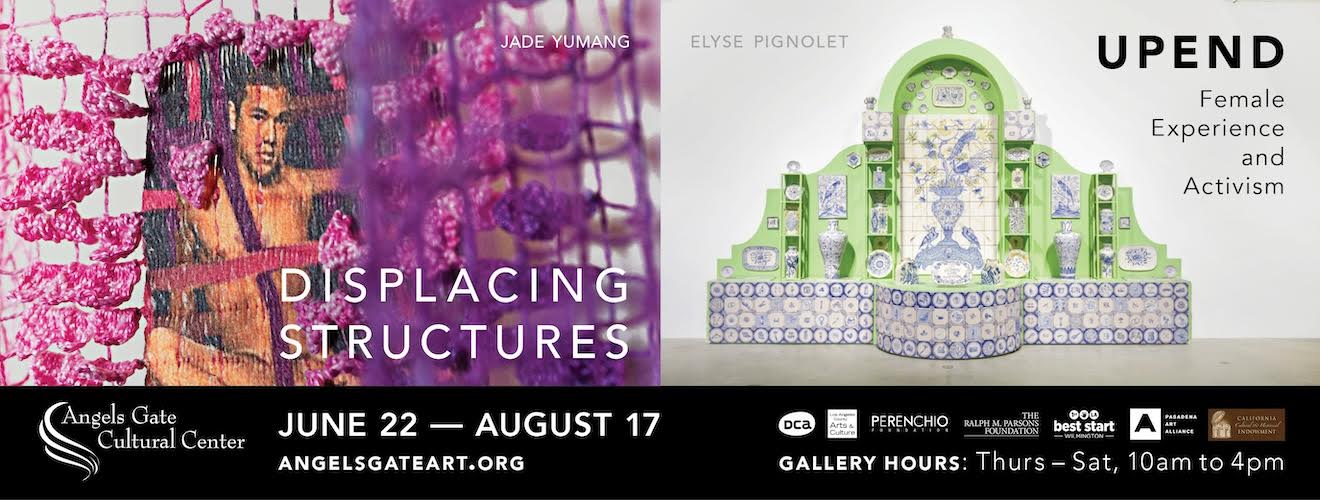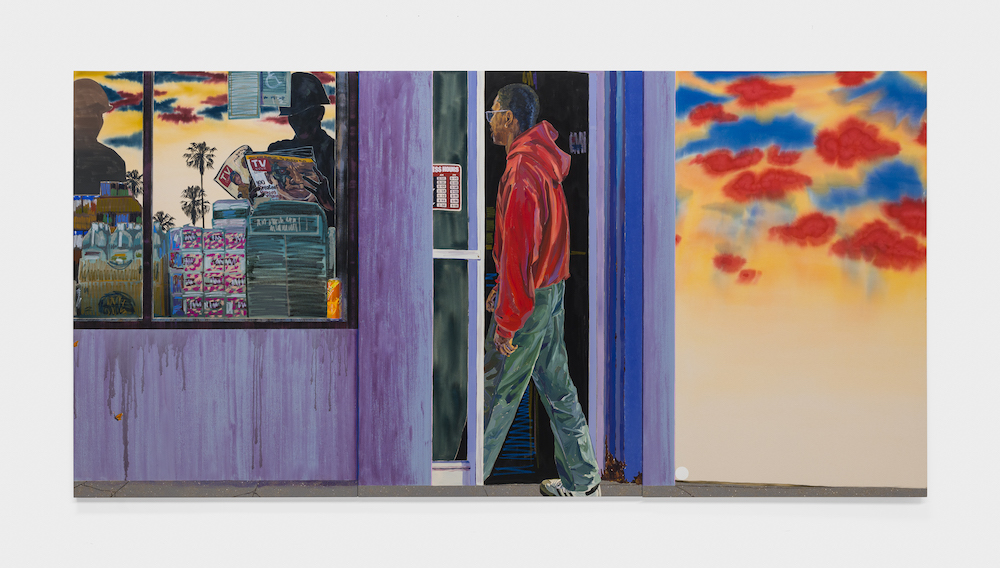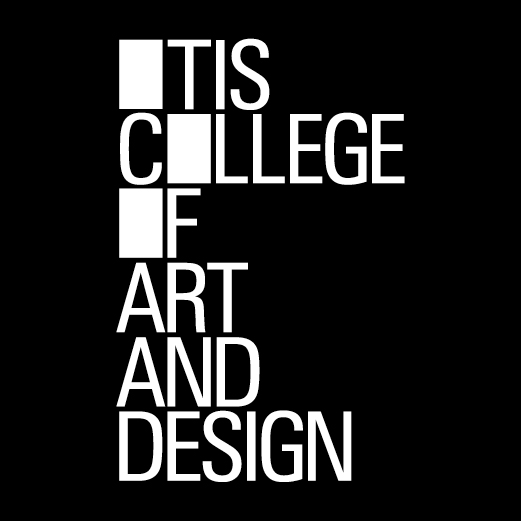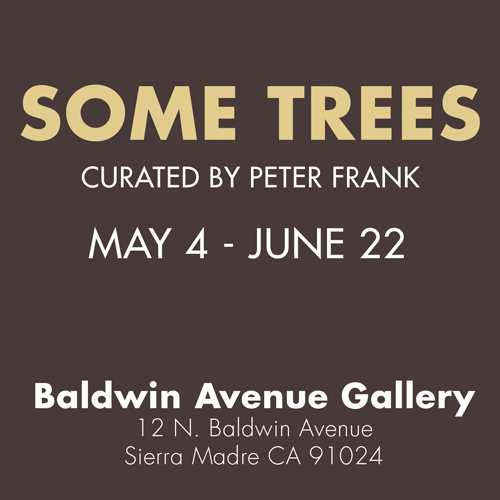At Night Gallery’s newly debuted kunsthalle-inspired space, Sidecar, “What Will You Give?” features numerous large-scale paintings by up-and-coming artists Tidawhitney Lek and Veronica Fernandez. Lek and Fernandez present pieces of work that showcase both the tranquility and uncertainty of the domestic and internal intimate spaces.
Lek’s triptych painting entitled Richie’s Liquor depicts a scene of a nondescript time and space as a young man in the modern day walks into a liquor store where two soldiers wearing Vietnam War army fatigues stand reading a TV guide which features Arnold Schwarzenegger on the cover and a headline that reads “100 Greatest Heroes and Villains”, a possible nod to the U.S.’s ambiguous role in Cambodia, as well as Schwarzenegger’s character whose role as an aggressor and savior vacillates throughout the Terminator film series.
Lek showcases several still life and micro-landscapes in “What Will You Give?” focusing on the mundanity and beauty of an empty street or the sign of a shopping center, well complemented by Fernandez’s paintings of human subjects in and around their homes. Fernandez’s paintings depict mixed scenes and mashed-up events which evoke the contradictions one holds with their own home as both a place of safety and often the birthplace of our traumas. In Fernandez’s pseudo-reality paintings, faces are blurred, spaces are mixed together, and objects seem to float around unaffected by gravity.

Veronica Fernandez, Pillowflight (Nobody is Coming to Protect You), 2024. Photo: Ed Mumford. Courtesy of Sidecar Gallery.
Fernandez’s painting Pillowflight (Nobody is Coming to Protect You) displays a TV floating in the air, playing wrestling, as a faceless figure imitates the move seen on TV ready to land on one of their unsuspecting friends, cousins, or siblings. The unsuspecting friends, however, are preoccupied and shown being attacked by a pair of dogs. As the subjects in time are frozen, we as an audience can’t help but want to intervene, to say “stop”, to protect the children whose own home seems to be a precarious space.
Both Fernandez and Lek point to a shared pain under a facade of beauty. Lek’s paintings employ glitter and scenes of blooming flowers or family members embracing and yet there is a remarkable sadness to these works and an eeriness of what’s to come. Fernandez’s ambiguous scenes and faceless subjects portray things within our families that are left unsaid and the fallibility of our own memories.













0 Comments